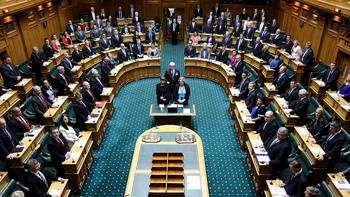
Over the next 15 years, Amazon Web Services plans to spend $7.5 billion building cloud computing data centres in New Zealand.
The investment will create a local AWS Region that’s due to open for business in 2024. It means customers who must store data locally will be able to run the same tasks available to AWS customers elsewhere.
Tiffany Bloomquist, AWS New Zealand country manager for the commercial sector, says the large-scale technology infrastructure investment will create 1000 jobs and contribute $10.8b to local GDP over that period.
The New Zealand AWS region will be one of 25 regions the company operates around the world — there are, at the time of writing, 81 availability zones.
“An AWS region is a physical location where we cluster multiple data centres,” explains Bloomquist.
“We call each group of these data centres an availability zone and each region contains a minimum of three isolated and physically separated availability zones. They’ll be placed around Auckland.
“Each availability zone has its own independent power and cooling. The zones are connected by a redundant, ultra-low latency (the time data takes to travel between locations and back again) network. There are the highest levels of physical security, compliance and data protection.”
There are four considerations AWS makes when designing availability zones.
Top of the list is the environment. The company says it goes to great pains to invest in locations that are sustainable. Bloomquist says that means thinking about environmental threats such as floods, extreme weather events and, in the case of New Zealand, earthquakes.
Another factor is the way the data centres are powered. AWS’ goal for its Auckland data centre is to use 100 per cent renewable energy. Says Bloomquist: “New Zealand has been investing significantly on that front which makes it an ideal location for us”.
- Amazon Web Services gets Overseas Investment Office clearance for $7.5b Auckland data centre
- Amazon says it will spend '$7.5 billion' on giant data centres in Auckland
The second key consideration is physical security. It depends on the location, but it can mean making sure there are an appropriate number of security guards, and that there is the right kind of fences, video cameras and intruder detection. “Physical security is absolutely our responsibility and it’s something we take very seriously.
AWS’s third consideration is the actual physical infrastructure: the building, the equipment inside and the ancillary equipment that keeps it running. This includes cooling — data centres can generate a lot of heat — and fire protection systems.
The fourth consideration is around the data. That’s where AWS has to share accountability with its customers.
It can keep its side of the deal by restricting access, maintaining clear separations and by using threat detection and security tools. But its responsibility can only go so far.
Bloomquist says when the company builds a business case before making a significant investment, it works backwards from what its customers need: “We listen to what they ask for. Our primary focus is to understand what their key user cases are. Then we can look at the investment we need to make to ensure we address that customer demand.”
For AWS’s New Zealand customers, who are mainly Auckland-based, a key demand is for lower latency.
AWS has New Zealand customers that already use its Sydney, Singapore or even US data centres. It takes time for data to travel to those locations and come back again.
This isn’t vital for every application, but there are tasks where low latency is essential, keeping everything in Auckland means latency is extremely low.
Another New Zealand customer demand is for data sovereignty, that’s necessary when rules or regulations require data to be kept in-country.
AWS is 20 years old and New Zealand companies have used cloud for much of that time.
So why is the company investing here now?
Bloomquist says the Covid pandemic accelerated companies thinking about how to scale businesses and manage costs better. They struggle with rising inflation and the scarcity or expense of talent. All these pressures combine to push companies to use more cloud computing. She says the local cloud spending is expected to rise 22 per cent this year.
Although New Zealand companies have used cloud computing for as long as their overseas counterparts, they have been slower than those in other countries to adopt the more advanced services cloud technology offers.
Bloomquist says: “We want customers to start thinking about the possibilities when the cloud is used with artificial intelligence, machine learning, advanced data analytics and even 5G technology. These are areas where we see cloud really differentiating. This is why the work we’ve done with Spark is so exciting.”
Earlier this year, Spark worked with AWS on two proof-of-concept projects for standalone 5G. While mobile phone networks have upgraded to 5G technology, the carriers have yet to see all the benefits of the upgrade because many of their background systems still run on older systems and rely on 4G infrastructure. AWS joined Spark, Mavenir and Nokia to show where the technology can go.
Bloomquist sees the potential for virtual and augmented reality along with real-time video analytics.
“We wanted to reduce latency; Spark has said that in some cases they have reduced latency by up to 70 per cent”.
Another possibility cloud offers is for, say, a manufacturer to build a digital twin of an entire manufacturing line.
“You’d be able to see all the physical systems represented virtually and customers would be able to go in and troubleshoot problems without touching anything.”
Getting advanced projects off the ground requires a pipeline of skilled talent.
Bloomquist and AWS are in the process of developing the Hāpori Wāhine programme which is a four-week, community-based programme for Kiwi women looking for the kind of cloud skills careers that are in demand. The programme includes a network of professionals to help participants kick-start careers in technology. Specifically, Hāpori Wāhine aims to reach women who might not have previously considered working in technology.
Other programmes from AWS include Cyber Skills Aotearoa which aims to give intermediate and high school students the skills they need to stay safe online and, in some cases, inspire students to consider careers in cyber security.
The AWS re/Start programme aims to prepare unemployed or under-employed people for careers in cloud computing. It’s a full-time 12-week course that, on completion, will connect students with potential employers.
AWS in New Zealand
- $7.5b investment from AWS.
- 1000 jobs will be created.
- $10.8b will be added to the local GDP.
- 100% renewable energy goal.
- 22% expected rise in local cloud spending this year.
- 12-week AWS re/Start programme to prepare unemployed or underemployed people for careers in cloud computing.
- Amazon Web Services is an advertising sponsor of the Herald’s Infrastructure report.
Take your Radio, Podcasts and Music with you









